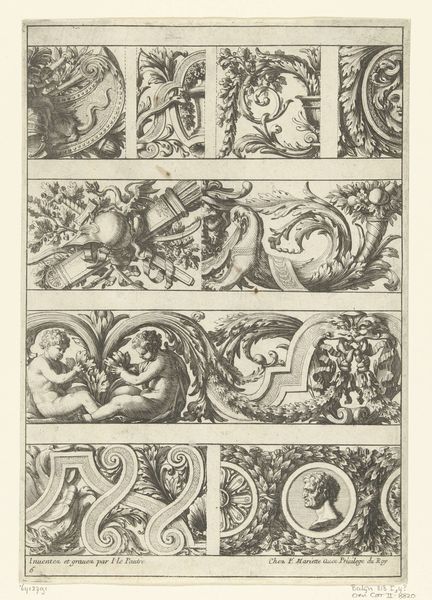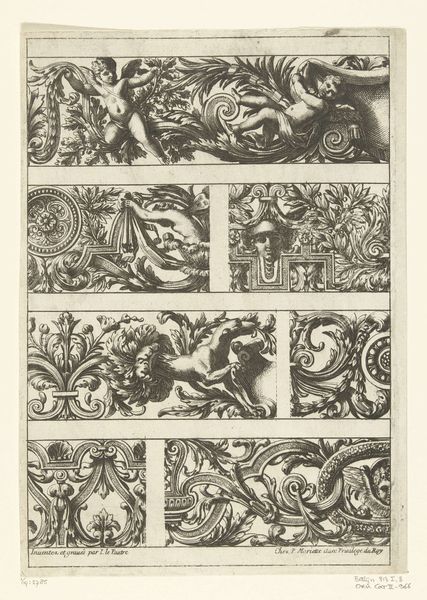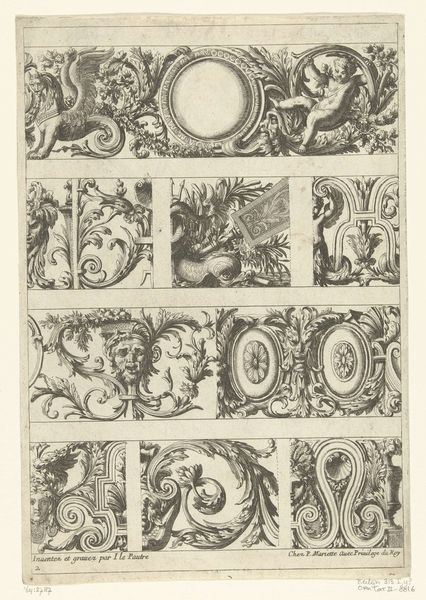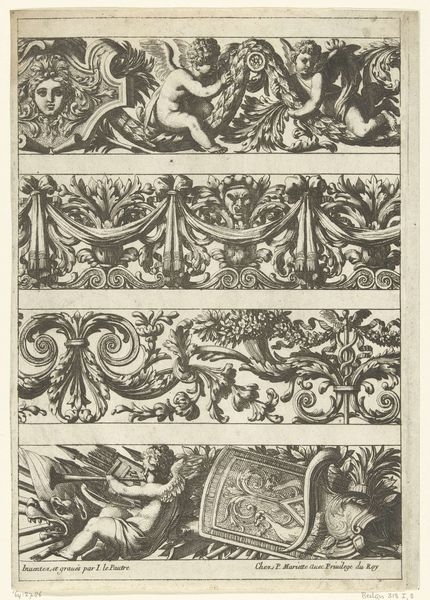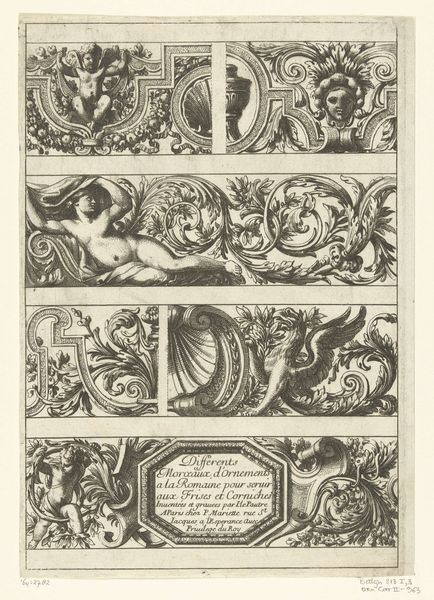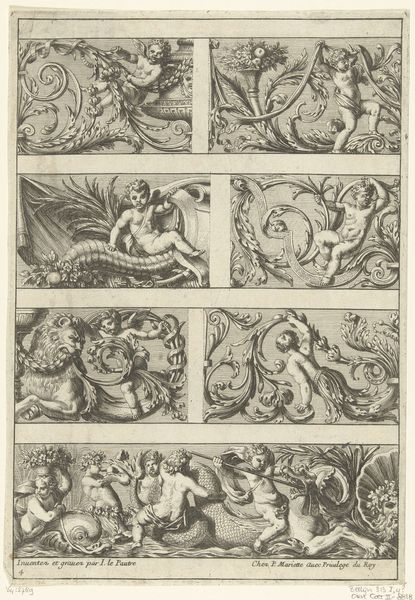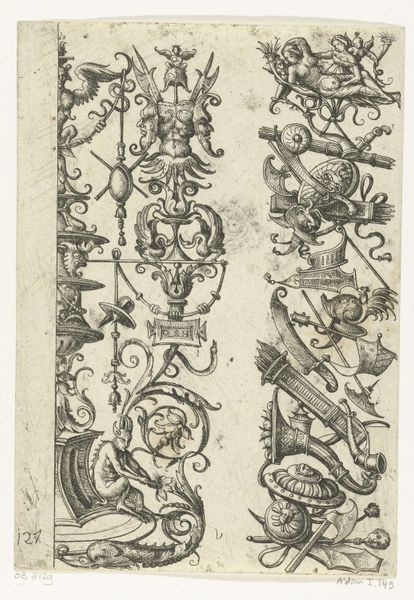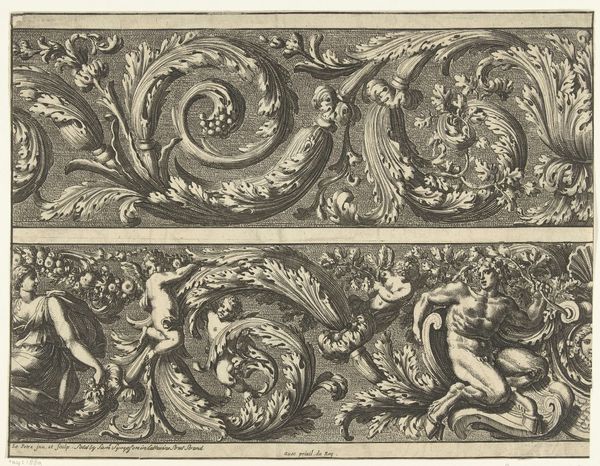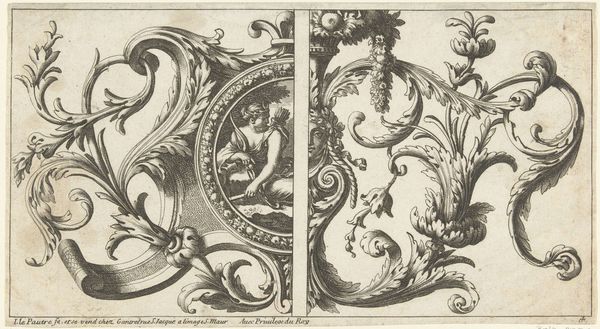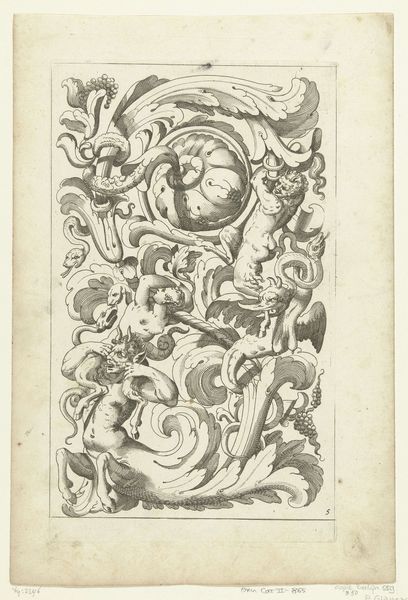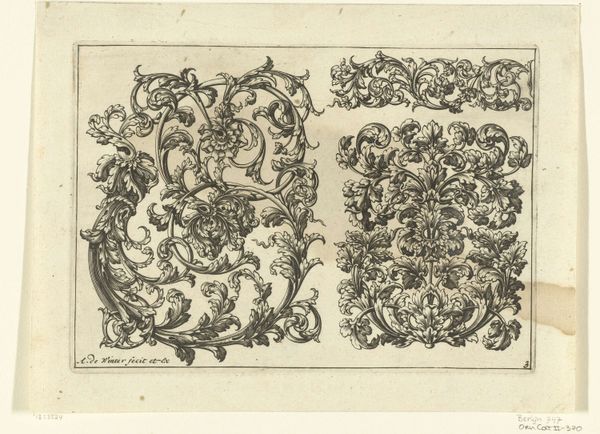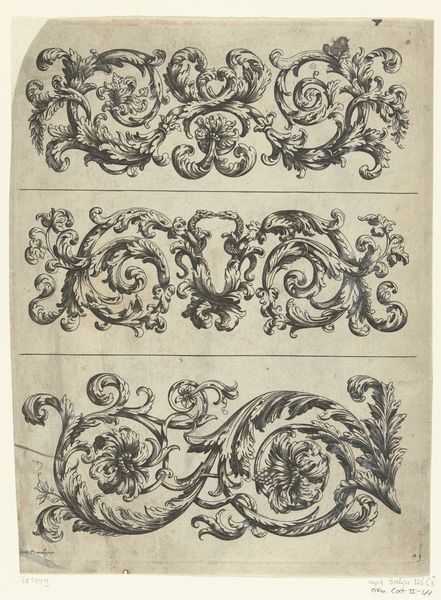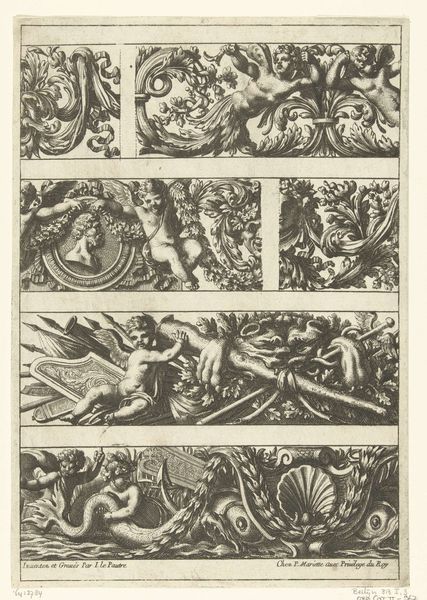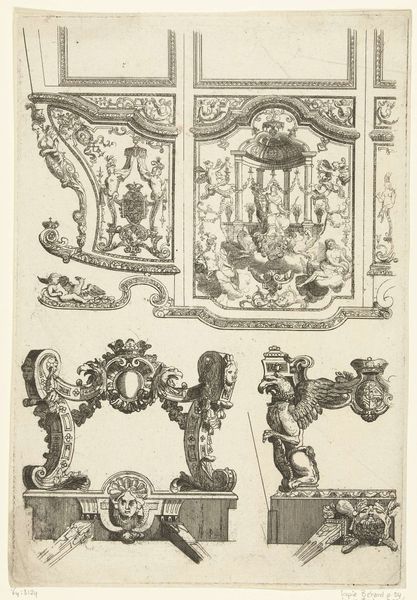
drawing, print, engraving
#
drawing
#
baroque
#
pen drawing
#
mechanical pen drawing
# print
#
pen illustration
#
old engraving style
#
form
#
line
#
decorative-art
#
engraving
Dimensions: height 276 mm, width 194 mm
Copyright: Rijks Museum: Open Domain
Curator: The precise lines give these "Vier rijen friezen," or "Four Rows of Friezes," a certain imposing elegance. I understand this engraving to be by Jean Lepautre, created before 1716. What are your initial thoughts? Editor: There’s a rather cold formality here, wouldn’t you say? It's intricate, yes, almost overwhelmingly so. And the crispness of the printmaking amplifies the symmetrical elements. The whole feels like a study in controlled ornamentation. Curator: The "old engraving style" and the use of "pen illustration" create a sense of cultural memory tied to classicism, especially given the inclusion of classical figures. It is drawing from a deep well. Each image, bordered into these almost "mechanical pen drawing" replicates classical designs used over generations, and I'd wager many artists kept these sheets for study. Editor: Absolutely. The ornamental character is palpable; this clearly belongs to a world deeply engaged in visual display and Baroque sensibilities. Given its probable date, Lepautre’s print would have served the workshops creating courtly aesthetics, propagating visual language from the elite down through society. Curator: Note the faces and the repetition of botanical images. We’ve also got an eagle there, symbols that would immediately carry cultural and psychological meaning, connecting those images to traditions of power and divinity. They all feed into the visual grammar of Baroque power. Editor: And they become more powerful the more that grammar circulates. Prints like these played a critical role in constructing the built environment of the time. They reflect and shape public taste by influencing architects, decorators, even furniture makers— establishing design's place in politics, quite literally shaping structures and objects invested with status. Curator: Indeed. In observing “form,” we must also analyze its role in larger societal structures. I suppose this piece invites reflection on both artful creation and also art as an agent in larger power dynamics. Editor: Ultimately, Lepautre's engravings are tools. In this case, “Vier rijen friezen” invites an interesting analysis not merely on individual components, but rather how standardized modules came to constitute expressions of grand societal design.
Comments
No comments
Be the first to comment and join the conversation on the ultimate creative platform.
